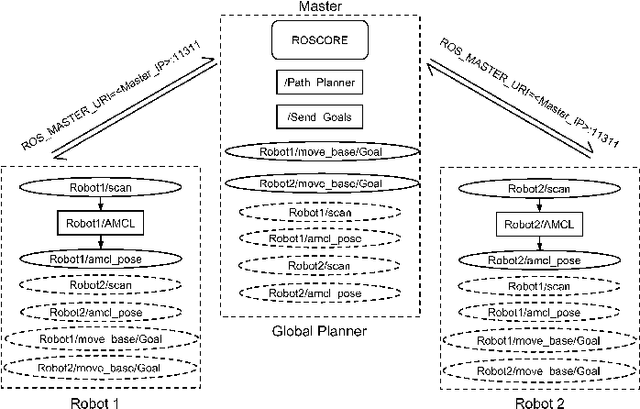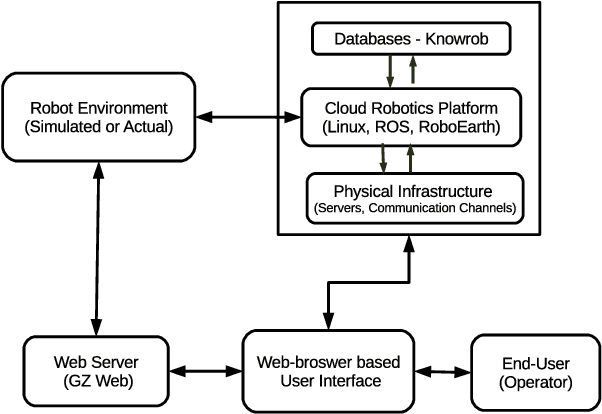Managing a Fleet of Autonomous Mobile Robots using Cloud Robotics Platform
Paper and Code
Jun 27, 2017



In this paper, we provide details of implementing a system for managing a fleet of autonomous mobile robots (AMR) operating in a factory or a warehouse premise. While the robots are themselves autonomous in its motion and obstacle avoidance capability, the target destination for each robot is provided by a global planner. The global planner and the ground vehicles (robots) constitute a multi agent system (MAS) which communicate with each other over a wireless network. Three different approaches are explored for implementation. The first two approaches make use of the distributed computing based Networked Robotics architecture and communication framework of Robot Operating System (ROS) itself while the third approach uses Rapyuta Cloud Robotics framework for this implementation. The comparative performance of these approaches are analyzed through simulation as well as real world experiment with actual robots. These analyses provide an in-depth understanding of the inner working of the Cloud Robotics Platform in contrast to the usual ROS framework. The insight gained through this exercise will be valuable for students as well as practicing engineers interested in implementing similar systems else where. In the process, we also identify few critical limitations of the current Rapyuta platform and provide suggestions to overcome them.
 Add to Chrome
Add to Chrome Add to Firefox
Add to Firefox Add to Edge
Add to Edge